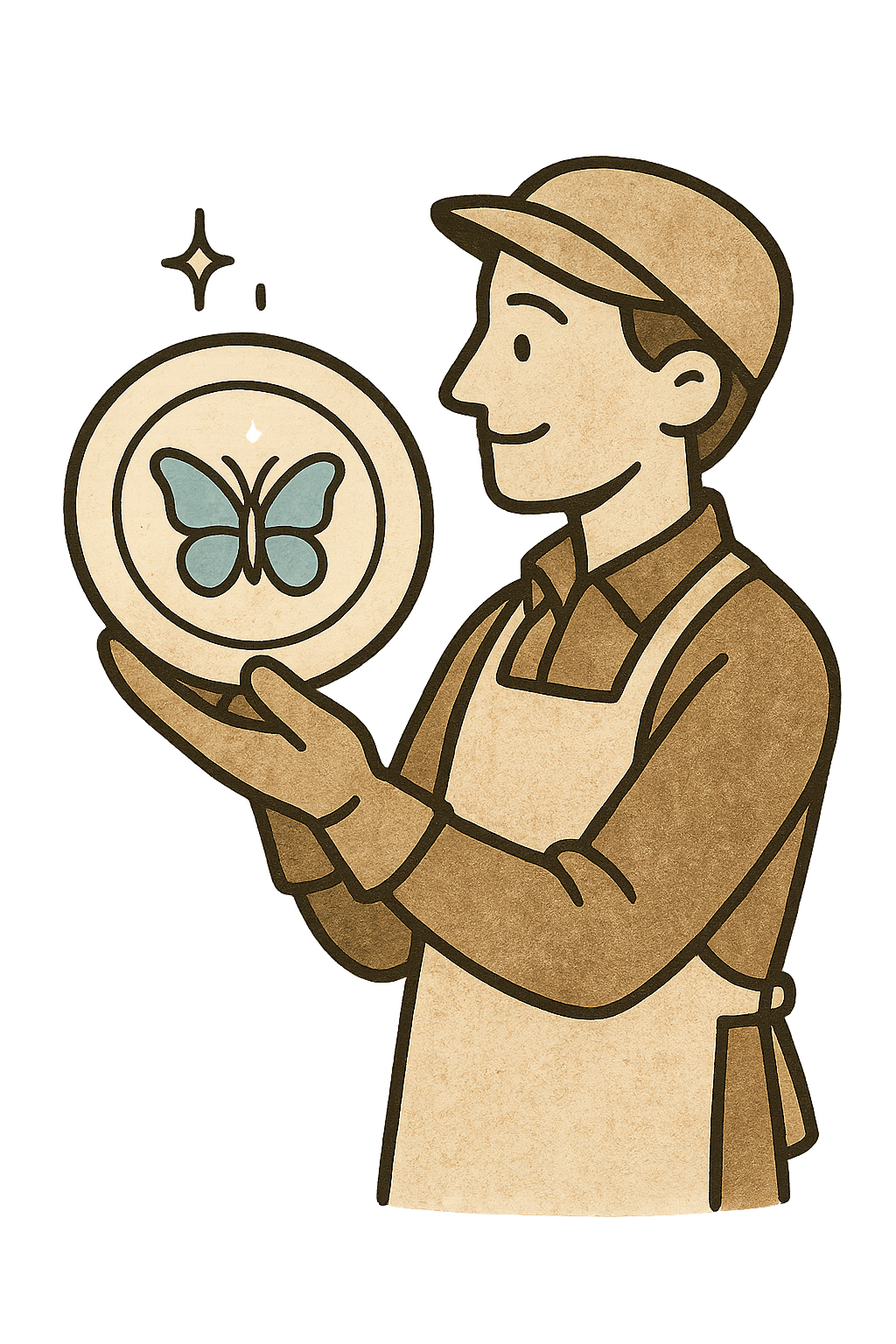How It Works - From Clay to Finished Plate
It takes time to create a plate. Here’s the process from start to finish.
Form the plate
Trim at leather-hard
Fire to bisque
Glaze the design
Glaze-fire to color
Inspect the finished plate
Step 1: Form the plate
Where raw clay becomes a plate-like shape
This can happen a few different ways, like throwing on a wheel, using a form, or hand-building. For my plates, I use a form to speed up the process and recreate the same size/shape every time.
Step 2: Trim at leather hard
Final adjustments before set in (almost) stone
Once the plate has time to become dry (but not too dry) then we can enhance the form by fine-tuning with our trimming tools. I trim the bottom of the plates to ensure they lie flat, and touch-up the rims so they look/feel aesthetically appealing.
Step 3: Fire to bisque
There’s no going-back now
The trimmed plates are left out to air dry to so all moisture leaves the plate. This can take time, because if the plate dries too quickly, it can warp, but if you don’t let all the moisture leave before the bisque-fire, then the moisture can create steam and steam can create an explosion.
When the plate is finally “bone dry”, we kick off the first firing to turn the plate from clay to stone. The finished piece is called “bisqued” meaning it’s ready for glazing!
Step 4: Glaze the design
Let the creative juices flow
This is my favorite part of the process. I sketch out a design on my iPad, and print out a stencil using my Cricut machine. Then I carefully measure and place the stencil on the bisqued plate, and start coloring in the design using a wide array of glazes.
Step 5: Glaze-fire to color
Bring the design to life - and pray to the kiln gods
The glazes are fired to cone 10 (1300° C, 2350° F) where the minerals in the glazes melt and combine to create the finished designs on the piece. This is where true alchemy sets in, and you learn to expect the unexpected.
Firing to such a high temperature causes the pieces to fully vitrify, and the clay becomes ceramic. Glazes can often time be completely unpredictable, where the outcomes are dependent on so many factors like:
The clay body
Was it porcelain or stoneware? Does it have iron? Does it have grog?
The glaze recipe
Is it stable like a shino? Will it interact with cobalt? Is it zinc-free? Are you expecting a matte or glossy finish?
The temperature
Did you hit the right temperature? Did you hold at that temperature for long enough?
Step 6: Inspect the finished piece
Hope the kiln gods have answered your prayers
The plate has truly gone through fire and brimstone, and once finally cooled, now’s the time to inspect for defects. Clay has a memory, and hopefully it’s a pleasant memory that lies flat on the table with minimal warping, and the colors have come out as expected.
If I’m happy with the product, this is where I either package it up to ship to you… or we start the process over!






